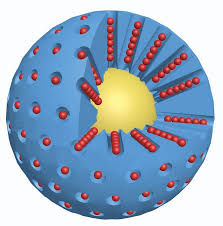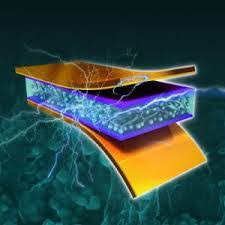Structure and Types of Nano Reactors in the Catalytic Process of Electrical Porous Materials (Based on Nano-Microelectronics PhD)
Researcher and author: PhD student Afshin Rashid
Note: One of the catalyst systems is nano-reactors. One of the applications of nano-reactors is the electronic conductivity of porous materials smaller than 011 nm.
Nano-reactors are very diverse. Simple or complex, organic and inorganic materials with electrical conductivity, volume, and tissue cavity are used as nano-reactors. Unlike micro-reactors, the reaction space inside the nanoreactors greatly affects the mobility and interactions between the molecules inside it. So the nano-reactor is not just a simple storage container and plays an important role in the electrochemical process. Nano-reactors are relatively new materials, but in nature, nano-reactors have long been used in processes. Electrochemical reactions in confined spaces with nanometer dimensions and micrometer volumes result in changes in the kinetics and direction of the whole process. To such confined spaces used for specific electrochemical reactions, a nano-reactor they say . Nano-reactors are very small nanometer-sized chambers that have the potential to improve electrochemical conversions by protecting catalysts from environmental impacts as well as encapsulating reactors and catalysts in a small space for a long time . In fact, nanoreactors are porous materials, one of which is nanoscale.
Numerous and simultaneous reactions in the cells of living things are also based on this principle. Therefore, a variety of bio-chemical structures have the characteristic of a nano-reactor. The Reasons and Benefits of Using Macroscopic Scale Reactors and Nano-Reactors is a chamber chemical reactor that enables the reaction to be carried out in a given volume. The advantages of the reactor allows for precise control of reaction conditions such as solvent, temperature and stirring rate is. At the micro- and nano- scale , chambers can also be created that separate a certain volume of the reaction mixture from the mass medium (Medium Bulk ). Deemed to be. Advantages of using nano-reactors include greater control over the reactivity, selectivity, removal of porous materials and electronic conduction of nano-materials from the mass medium, thereby reducing system toxicity or enhancing catalyst stability and being ideal in electrochemical processes. Noted because of their small size.
Conclusion :
In general, nanostructures of a certain size, shape, and geometry have unique properties different from those of bulk materials . Using nanometer- and micrometer-sized reaction environments, they can produce new nanomaterials with interesting properties. In general, nano-reactors are nanometer-sized chambers in which chemical reactions can be performed. Of course, nano-reactors are, in some ways, part of the reaction, and their main difference is with the micro-reactors. The use of porous materials is one of the useful solutions for achieving the environment of nano-reactors. Therefore, due to the importance of nano-reactors, the porous structures of silicate and zeolite are the most prominent and widely used compounds in this group .
Author: dr. Afshin Rashid
PhD student of Nano-Microelectronics at Islamic Azad University, Science and Research Branch, Tehran




